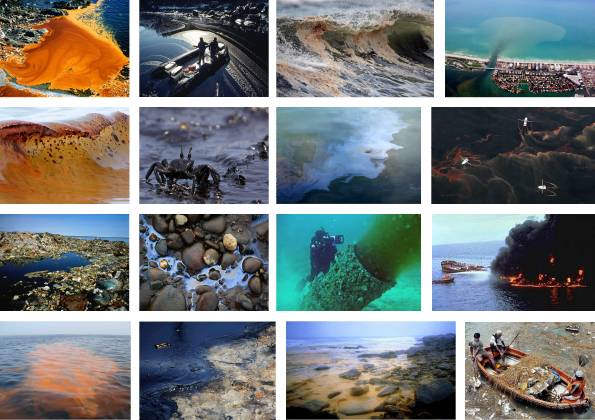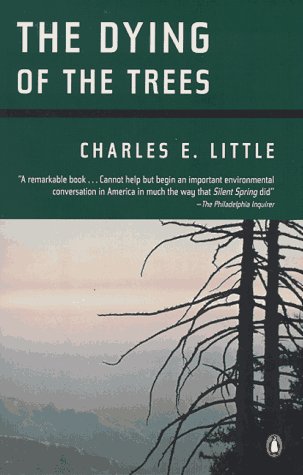 Ocean Dumping
Ocean DumpingGovernments world-wide were urged by the 1972 Stockholm Conference to control the dumping of waste in "their oceans" by implementing new laws. The United Nations met in London after this recommendation to begin the Convention on the Prevention of Marine Pollution by Dumping of Wastes and Other Matter which was implemented in 1975. The International Maritime Organization was given responsibility for this convention and a Protocol was finally adopted in 1996, a major step in the regulation of ocean dumping.
Waste in the OceanEPA seeks to clean up DDT-tainted site off Palos Verdes Peninsula
The agency in 1996 declared about 17 square miles of ocean a Superfund site . Its proposal includes placing a cap of silt and sand over the most contaminated 320 acres. The federal Environmental Protection Agency on Thursday proposed spending at least $36 million to clean up the world's largest deposit of banned pesticide DDT , which lies 200 feet underwater off the Palos Verdes Peninsula. Montrose Chemical Corp., which was based near Torrance, released 110 tons of DDT and 10 tons of toxic PCBs into the sewers from 1947 through 1971. The chemicals then flowed into the Pacific. By Jeff Gottlieb - June 12, 2009
The most toxic waste material dumped into the ocean includes dredged material, industrial waste, sewage sludge, and radioactive waste. Dredging contributes about 80% of all waste dumped into the ocean, adding up to several million tons of material dumped each year. Rivers, canals, and harbors are dredged to remove silt and sand buildup or to establish new waterways. About 20-22% of dredged material is dumped into the ocean. The remainder is dumped into other waters or landfills and some is used for development. About 10% of all dredged material is polluted with heavy metals such as cadmium, mercury, and chromium, hydrocarbons such as heavy oils, nutrients including phosphorous and nitrogen, and organochlorines from pesticides. Waterways and, therefore, silt and sand accumulate these toxins from land runoff, shipping practices, industrial and community waste, and other sources. When these materials find their way into the ocean, marine organisms suffer toxic effects and seafood is often contaminated.

When "pure" dredged material is dumped into the ocean, fisheries suffer adverse affects such as unsuccessful spawning in herring and lobster populations where the sea floor is covered in silt.
 Industrial Waste
Industrial WasteIn the 1970s, 17 million tons of industrial waste was legally dumped into the ocean. In the 1980's, 8 million tons were dumped including acids, alkaline waste, scrap metals, waste from fish processing, flue desulphurization, sludge, and coal ash.
Sewage SludgeIf sludge from the treatment of sewage is not contaminated by oils, organic chemicals and metals, it can be recycled as fertilizer for crops.
It is cheaper for treatment centers to dump this material into the ocean, particularly if it is chemically contaminated. The UN policy is that properly treated sludge from cities does not contain enough contaminants to be a significant cause of eutrophication (an increase in chemical nutrients—typically compounds containing nitrogen or phosphorus—in an ecosystem) or to pose any risk to humans if dumped into the ocean. The peak of sewage dumping was 18 million tons in 1980, a number that was reduced to 12 million tons in the 1990s.
Radioactive WasteRadioactive waste is also dumped in the oceans and usually comes from the nuclear power process, medical use of radioisotopes, research use of radioisotopes and industrial uses. The difference between industrial waste and nuclear waste is that nuclear waste usually remains radioactive for decades. The protocol for disposing of nuclear waste involves special treatment by keeping it in concrete drums so that it doesn't spread when it hits the ocean floor. The dumping of radioactive material has reached a total of about 84,000 terabecquerels (TBq), a unit of radioactivity equal to 1012 atomic disintegrations per second or 27.027 curies. Curie (Ci) is a unit of radioactivity. One curie was originally defined as the radioactivity of one gram of pure radium. In 1953, scientists agreed that the curie would represent exactly 3.7 x 1010 atomic disintegrations per second, or 37 gigabecquerels (GBq), this being the best estimate of the activity of a gram of radium. The unit is named for Pierre and Marie Curie who discovered radium. The high point of nuclear waste dumping was in 1954 and 1962, but this nuclear waste only accounts for 1% of the total TBq that has been dumped in the ocean. The concentration of radioactive waste in the concrete drums varies as does the danger to marine life and humans.
The Problems with Ocean DumpingAlthough policies on ocean dumping in the recent past took an "out of sight- out of mind" approach, it is now known that accumulation of waste in the ocean is detrimental to marine and human health. Another unwanted effect is eutrophication. A biological process where dissolved nutrients cause oxygen-depleting bacteria and plants to proliferate creating a hypoxic, or oxygen poor, environment that kills marine life. In addition to eutrophication, ocean dumping can destroy entire habitats and ecosystems when excess sediment builds up and toxins are released. Although ocean dumping is now managed to some degree, and dumping in critical habitats and at critical times is regulated, toxins are still spread by ocean currents. Alternatives to ocean dumping include recycling, producing less wasteful products, saving energy and changing the dangerous material into more benign waste.
According to the United Nations Group of Experts on the Scientific Aspects of Marine Pollution , the amount of ocean dumping actually brings in less pollution than maritime transportation, atmospheric pollution, and land based pollution like run-off. However, when waste is dumped it is often close to the coast and very concentrated.
Waste dumped into the ocean is categorized into the black list, the gray list, and the white list. On the black list are organohalogen compounds, mercury compounds and pure mercury, cadmium compounds and pure cadmium, any type of plastic, crude oil and oil products, refined petroleum and residue, highly radioactive waste, any material made for biological or chemical warfare.
The gray list includes water highly contaminated with arsenic, copper, lead, zinc, organosilicon compounds, any type of cyanide, flouride, pesticides, pesticide by-products, acids and bases, beryllium, chromium, nickel and nickel compounds, vanadium, scrap metal, containers, bulky wastes, lower level radioactive material and any material that will affect the ecosystem due to the amount in which it is dumped.
The white list includes all other materials not mentioned on the other two lists. The white list was developed to ensure that materials on this list are safe and will not be dumped on vulnerable areas such as coral reefs.
Issues associated with Ocean DumpingIncineration has been used to control dangerous chemical waste being dumped into the Ocean. This practice began in 1969 and became very popular by the late 1970's. By the mid-1980's, about 100,000 tons of waste was incinerated before it was dumped. This process has been studied to determine whether the practice is safe and effective. When dangerous waste is burned, it can produce smoke full of hazardous chemicals and may possibly spill into the ocean. After thorough evaluation, it was determined in 1989 that incineration is not a viable method of reducing the amount of waste dumped into the ocean because of the smoke released, and therefore, almost all the waste burning vessels were grounded. The Protocol of 1996 banned burning waste at sea altogether.
The majority of nuclear waste in the ocean comes from six submarine reactors, one nuclear icebreaker reactor, and damaged nuclear fuel in the Kara Sea. The rest of the nuclear material in the ocean is solid nuclear waste in concrete drums.
Although some claim the risk to human health is small, the long-term affects of nuclear dumping are not known, and some estimate up to 1,000 deaths in the next 10,000 years as a result of evaporated nuclear waste.
In 1995, a Global Waste Survey and the National Waste Management Profiles inventoried waste dumped worldwide to determine what countries were dumping waste and how much was going into the ocean. Countries that exceeded an acceptable level would then be assisted in the development of a workable plan to dispose of their waste.
The impact of a global ban on ocean dumping of industrial waste was determined in the Global Waste Survey Final Report the same year. In addition to giving the impact for every nation, the report also concluded that the unregulated disposal of waste, pollution of water, and buildup of materials in the ocean were serious problems for a multitude of countries. The report also concluded that dumping industrial waste anywhere in the ocean is like dumping it anywhere on land. The dumping of industrial waste had reached unacceptable levels in some regions, particularly in developing countries that lacked the resources to dispose of their waste properly. Enforcement of regulations was also a problem in these areas, so it was necessary to assist the countries in the implementation of a waste disposal strategy.
Areas where high levels of illegal dumping occur are commonly areas that have no way of implementing a better strategy. A global ban on ocean dumping is not enough to eliminate the practice, and it will require all governments to have a workable plan to reduce the amount of waste, recycle some waste, and learn how to modify waste that is dumped into the ocean so it is less harmful.
Take Action Against Ocean Pollution
http://marinebio.org/oceans/ocean-dumping.aspLove Always
mudra

 Our legacy to future generations
Our legacy to future generations
 Re: Our legacy to future generations
Re: Our legacy to future generations
 Re: Our legacy to future generations
Re: Our legacy to future generations Re: Our legacy to future generations
Re: Our legacy to future generations Re: Our legacy to future generations
Re: Our legacy to future generations Re: Our legacy to future generations
Re: Our legacy to future generations Re: Our legacy to future generations
Re: Our legacy to future generations


 Re: Our legacy to future generations
Re: Our legacy to future generations Re: Our legacy to future generations
Re: Our legacy to future generations Re: Our legacy to future generations
Re: Our legacy to future generations pollution of the baltic sea.pdf
pollution of the baltic sea.pdf  Re: Our legacy to future generations
Re: Our legacy to future generations Re: Our legacy to future generations
Re: Our legacy to future generations
 Re: Our legacy to future generations
Re: Our legacy to future generations

 Re: Our legacy to future generations
Re: Our legacy to future generations Re: Our legacy to future generations
Re: Our legacy to future generations Re: Our legacy to future generations
Re: Our legacy to future generations Re: Our legacy to future generations
Re: Our legacy to future generations


 agroecology
agroecology Re: Our legacy to future generations
Re: Our legacy to future generations


 Re: Our legacy to future generations
Re: Our legacy to future generations Re: Our legacy to future generations
Re: Our legacy to future generations
 Re: Our legacy to future generations
Re: Our legacy to future generations Re: Our legacy to future generations
Re: Our legacy to future generations Re: Our legacy to future generations
Re: Our legacy to future generations Re: Our legacy to future generations
Re: Our legacy to future generations